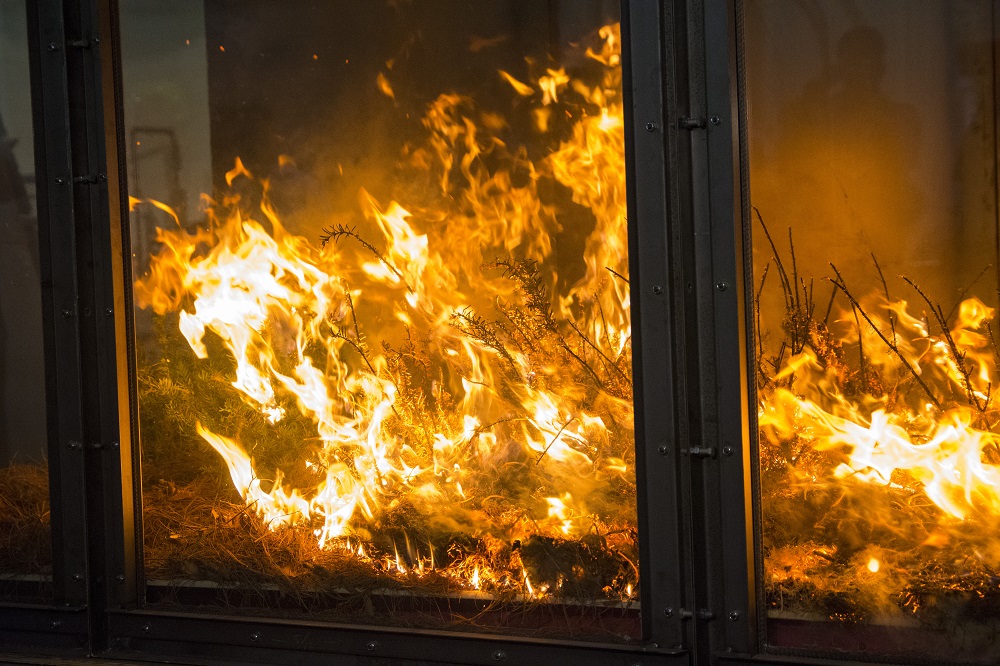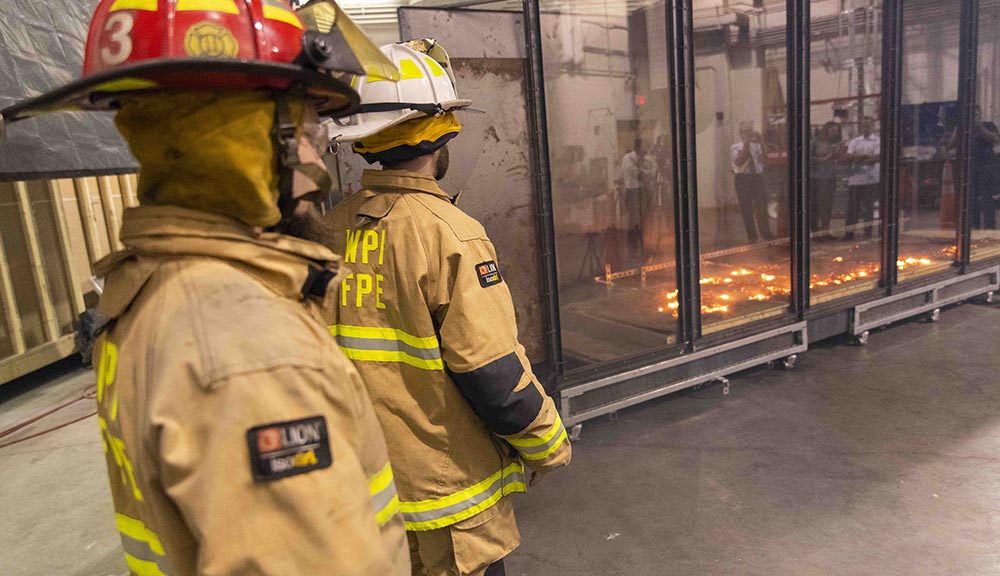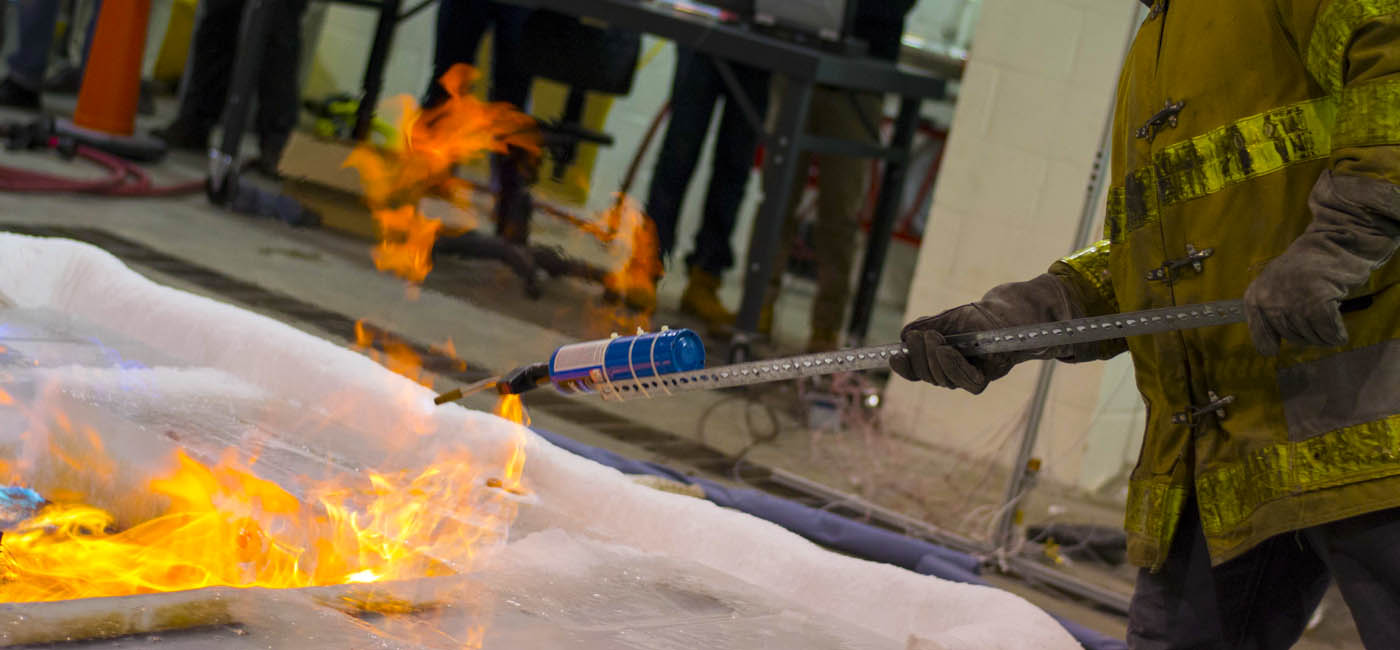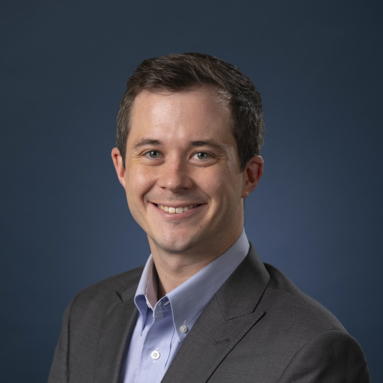Name a place where you might expect to uncover the unknown inner workings of wildfires. Chances are outer space does not top the list. However, that’s exactly where fire protection engineering Assistant Professor James Urban is sending his research.
As early as August 3, a SpaceX Falcon 9 is scheduled to blast off from NASA’s Kennedy Space Center in Cape Canaveral, Fla. The rocket will launch a Northrup Grumman Cygnus spacecraft carrying cargo bound for the International Space Station (ISS). On board the cargo mission will be supplies for Urban’s research into how flames spread. Astronauts on the space station will perform experiments for Urban’s study, funded by the National Science Foundation and sponsored by the ISS National Laboratory.
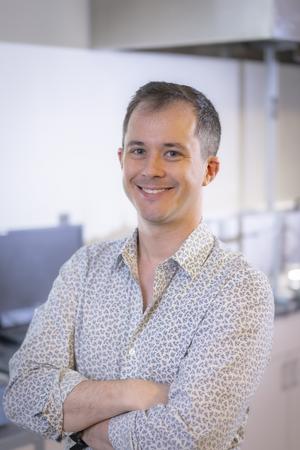
Assistant Professor James Urban
“The International Space Station gives us a really amazing opportunity to perform an experiment we could not do on Earth,” says Urban. “In space, we’ve effectively created an environment where there isn’t the effect of gravity or buoyancy.” Through experiments Urban’s team has been conducting in WPI’s fire protection engineering (FPE) labs, and through the upcoming tests in space, he hopes to better understand how wildfires spread here on Earth to more accurately predict how quickly and where a fire will spread once flames erupt.
Urban is focusing on an area where research is limited: how non-steady flame behavior in wildfires contribute to wildfire spread. For example, wildfires tend to be dynamic. They often spread through the uneven and intermittent movement of flames, influenced by rapidly changing winds, gravity-fueled buoyancy, and the varying presence of flammable materials.
However, Urban says most research into fires in laboratory settings is done with equilibrium and an idealized version of stable flame spread, rather than with variable settings that mimic the real-world, like changeable wind speed. That's where the space station comes in.
“Non-steady flame behavior is hard to research in a small-scale laboratory test,” says Urban. “But in space, without the effect of gravity, we can control the flame by controlling the airflow and we can create non-steady flame behaviors and study those behaviors in a controlled environment to better understand their role.”
Urban says ground-based experiments in WPI’s labs allow his team to change the air flow affecting a flame, but gravity is always playing a role on Earth in a flame’s behavior, making it impossible to fully control the flame without modifying air flow in a microgravity setting like the upcoming experiments on the International Space Station.
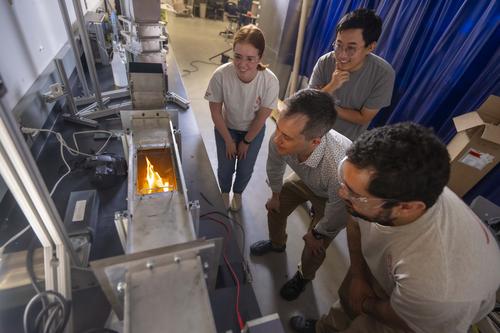
Professor Urban's research team observes a ground-based flame spread experiment in a fire protection engineering lab.
The equipment Urban’s team is sending to space includes fuel samples, a sample holder, and hardware to ignite it. The fuel samples are thin sheets of polymethyl methacrylate, each a little longer and wider than a cell phone. The sample holder is a tray with backing insulation that a sample can slide into. The sample holder also includes an igniter wire, similar to what you'd find in a toaster, connected to electrical leads. The wire is used to ignite the fuel sample when the experiment begins.
On board the ISS, astronauts will burn one fuel sample at a time inside a flow duct within a sealed chamber. Urban will monitor the first few experiments from NASA’s Glenn Research Center in Ohio and suggest adjustments, if needed, for future burns. Each experiment will result in video footage and sensor data on radiant heat and flow velocities, which Urban’s team will analyze to see how the rate of flame spread changes over time and how changes in the shape of a flame impact the rate of spread.
In advance of the ISS mission, Urban’s team has been designing and conducting similar experiments in wind-tunnels in the FPE labs, burning samples in both horizontal and vertical configurations. They have also created strategies for analyzing the data that will be beamed down to Earth from the space experiments. Urban’s team consists of postdoctoral fellow Xiuqi Xi, doctoral student Pablo Pinto, and master’s student Alana Miska; all are in the Department of Fire Protection Engineering.



